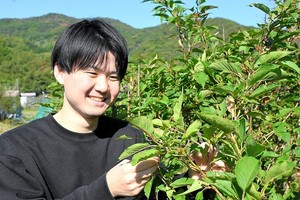By AKEMI KANDA/ Staff Writer
June 6, 2022 at 07:10 JST
OSAKA--Work to prepare Yumeshima island here to host the 2025 Osaka Kansai Expo is threatening the habitats of endangered wild bird species living in wetlands and gravelly soil.
Nongovernmental organizations have called on the Osaka city government to take preservation measures.
“We have requested that the environment be preserved precisely because it is not being preserved,” said Mikio Matsuoka, who heads the Osaka branch of the Wild Bird Society of Japan, which submitted a written request to the city in March with other groups.
“The habitats of wild birds and other forms of wildlife will be lost during the soil engineering work being conducted by the Osaka Ports and Harbors Bureau even before the expo association begins construction of expo facilities.”
Yumeshima, a man-made island in Osaka Bay with a landmass of 390 hectares, was created through land reclamation work beginning in 1977. An ecosystem of wild birds and plants has formed on reed fields, wetlands and gravelly soil over time.
About 100 species of wild birds have been spotted on Yumeshima. The black-winged stilt and the little tern, both endangered species, have been found breeding on the island.
Reed fields are being reclaimed. Wetlands are scheduled to soon be covered with concrete and serve as a water area called Water World during the expo.
The Japan Association for the 2025 World Exposition, which is organizing the event, will start building pavilions and other facilities once the Osaka Ports and Harbors Bureau, jointly operated by the municipal and prefectural governments, completes the soil improvement work on the island.

In April, the Nature Conservation Society of Osaka (Nature Osaka) submitted a residents’ audit request against the city government, calling on Osaka Mayor Ichiro Matsui to “suspend the engineering work immediately, review the work methods ... and strive to restore the fauna and the ecosystem already destroyed.”
In response to the audit request, Matsui defended the engineering work in progress.
“The property of Osaka’s citizens was used in reclaiming land plots in the bay area, so I solicit understanding toward our plan to effectively use those assets while properly preserving the environment,” he told reporters on April 18. “Both the ports and harbors bureau and the expo association are doing their work in such a way that the environment will be preserved.”
The city government rejected the residents’ audit request in May.
Yumeshima is one of only 16 Rank A biodiversity hot spots in Osaka Prefecture, so designated by the prefectural government, which are supposed to have the highest degree of diversity.
It is also one example the Osaka city government cited in its biodiversity strategy, which says the city will work to preserve the precious natural environment that exists on its territory.
The city government in February issued the mayor’s comments regarding a draft environmental impact statement on the expo project plan, which the expo association had compiled last September.
“A diverse group of birds has been spotted on Yumeshima, so the organizer should, before beginning construction, prepare a road map that will take into account the habitats of, and the breeding environments for, those birds and preserve and create diverse environments, including wetlands, grasslands and gravelly soil,” part of the comments read.

Environmental groups have raised concerns about the feasibility of the municipal authorities pursuing the dual goals of conducting engineering work at the expo site and calling on the organizer to exercise care for the environment.
The written request jointly submitted in March by the Nature Conservation Society of Japan, the World Wide Fund For Nature (WWF) Japan and the Wild Bird Society of Japan said Water World “should be redesigned in such a way that wetlands and tidal mud flats are created so waterfowl can live there after the expo.”
Nature Osaka also requested specific preservation plans be immediately presented even while the Osaka Ports and Harbors Bureau is doing the land development work.
An official with the development coordination division of the Osaka Ports and Harbors Bureau said, “We will seek to have the natural environment regenerated on Yumeshima in the future, but no preservation is possible on land plots designated for the expo venue.”
If migratory little terns are to be found nesting and breeding on the island from spring to summer, they will be provided protection during the period, the official added.
Unconvinced, Yoshihiro Natsuhara, who heads Nature Osaka, said plans to cover wetlands with concrete should be reworked.
“The wetlands are designated to serve as (Water World), which will be off limits to humans, during the expo,” he said. “Having the wetlands preserved as they are would pose no obstacle to the expo and would allow wild birds to live there.”
Natsuhara added what the organizer and the authorities are doing is “at odds with” the expo’s stated goal of creating a society that would achieve the U.N. Sustainable Development Goals.




















A peek through the music industry’s curtain at the producers who harnessed social media to help their idols go global.
A series based on diplomatic documents declassified by Japan’s Foreign Ministry
Here is a collection of first-hand accounts by “hibakusha” atomic bomb survivors.
Cooking experts, chefs and others involved in the field of food introduce their special recipes intertwined with their paths in life.
A series about Japanese-Americans and their memories of World War II